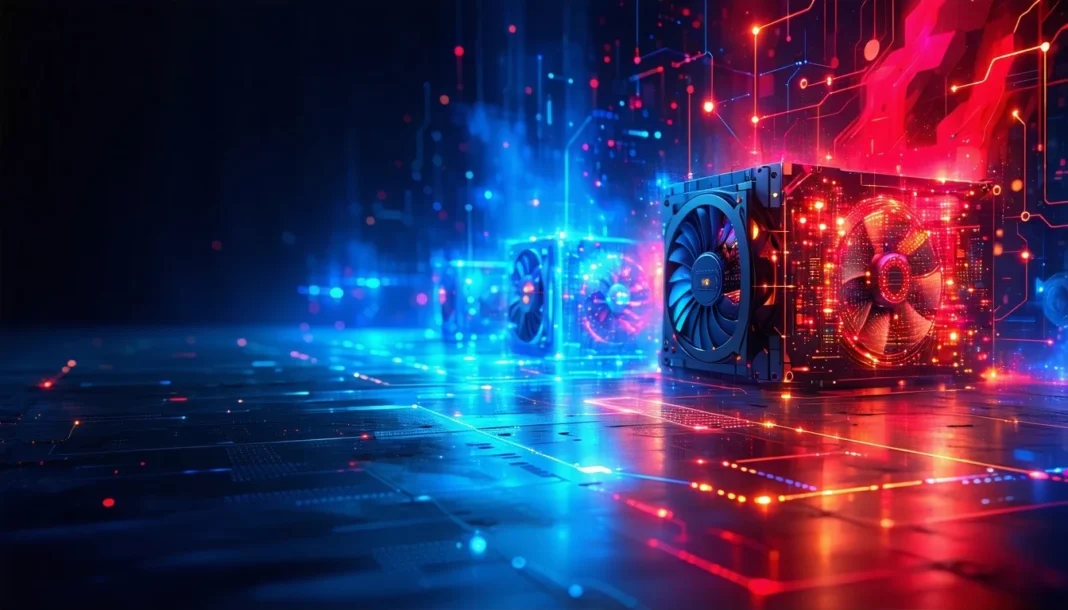The landscape of artificial intelligence is advancing rapidly, challenging the limits of digital infrastructure.
As AI workloads become increasingly intricate, the need for high-performance computing, effective power management, and sophisticated cooling systems has reached unprecedented levels.
NVIDIA’s GTC 2025 event underscored a pivotal transformation traditional data centers must evolve or face the risk of obsolescence.
This article examines why adopting a Power Cooling AI Ready infrastructure is imperative for businesses aiming to remain competitive in the age of AI.
The Dawn of AI Infrastructure
Power. Cooling. AI Ready—these three elements are now fundamental to the evolution of next-generation data centers. NVIDIA’s GTC 2025 event has clearly indicated that the AI revolution is gaining momentum, and conventional data centers can no longer match the pace of technological advancements.
As AI workloads challenge existing infrastructure, organizations must reassess their strategies regarding power efficiency, cooling technologies, and overall deployment methodologies.
The Influence of NVIDIA’s Blackwell Platform on Data Centers
During GTC 2025, NVIDIA introduced its innovative Blackwell platform, establishing a new benchmark for high-performance AI computing. With racks demanding up to 140kW per unit, power requirements are escalating, necessitating the implementation of robust power distribution systems.
In parallel, cooling solutions must transition from traditional air cooling to advanced liquid cooling systems to manage significant heat dissipation. Without these essential enhancements, data centers risk becoming outdated in the AI-driven landscape.
Key Insights from NVIDIA’s GTC 2025
NVIDIA has unveiled its latest DGX GB200 NVL72 racks, which feature 72 GPUs (comprising 36 Grace-Blackwell Superchips) and consume between 120kW and 140kW per rack.
This represents a significant increase in power usage compared to earlier AI architectures like the A100 or H100, which operated at only 25–40kW. In contrast, traditional CPU/GPU racks, which typically require around 5–15kW, now seem inadequate.
To remain competitive, organizations must prepare their infrastructure for future demands by designing systems that can handle up to 150kW per rack to effectively support increasing AI workloads.
Enhancing AI Deployment with Cost Efficiency
NVIDIA has also launched Inference Microservices (NIMs), which facilitates quicker and more cost-effective deployment of AI models.
These microservices are pre-packaged and containerized, providing high-performance inference through standard APIs.
However, to fully leverage their potential, organizations need infrastructure that is optimized for high-density computing, scalable GPU performance, and ultra-low latency.
Liquid Cooling Has Become Essential
Given the substantial heat produced by Blackwell-class GPUs, liquid cooling is now a critical requirement rather than a mere option.
Advanced cooling technologies, such as direct-to-chip cooling and rear-door heat exchangers, are vital for maintaining high-performance AI workloads while minimizing energy waste.
Implications for Various Stakeholders
The swift integration of AI technology necessitates that hyperscale cloud providers enhance their infrastructure to accommodate extremely dense workloads.
Their competitiveness will hinge on their scalability, efficiency, and sustainability.
Colocation Providers Must Adapt
Colocation facilities are required to rapidly transition by incorporating AI-compatible environments that provide:
- Increased rack densities
- Liquid cooling systems
- Versatile power configurations
Data centers that do not modernize will find it challenging to meet the escalating demands of AI, thereby falling behind competitors with facilities optimized for AI.
Enterprises Need to Evaluate Infrastructure Preparedness
Organizations expanding their AI capabilities must assess whether their existing data centers or colocation providers can handle high-density workloads.

The consideration is no longer whether upgrades to AI infrastructure are needed, but rather the speed at which critical these upgrades can be executed.
Looking Forward: The Emergence of AI-Optimized Data Centers
As the complexity of AI workloads increases, the need for robust power and cooling solutions in AI-optimized infrastructure is set to rise significantly.
The gap between data centers equipped for AI and those that are not will expand, leaving older facilities struggling to adapt to technological advancements.
Organizations that neglect to invest in scalable, high-performance infrastructure may face severe capacity constraints, elevated operational expenses, and a diminished competitive edge.
Expert Editorial Comment
NVIDIA’s GTC 2025 served not only as a platform for product announcements but also as a crucial reminder. The future driven by AI is advancing rapidly, necessitating data centers capable of meeting extraordinary power and cooling demands.
Companies that delay action will find themselves limited, while those who respond promptly will establish themselves as leaders in AI innovation. The essential question remains: is your infrastructure equipped for Power, Cooling, and AI readiness?

